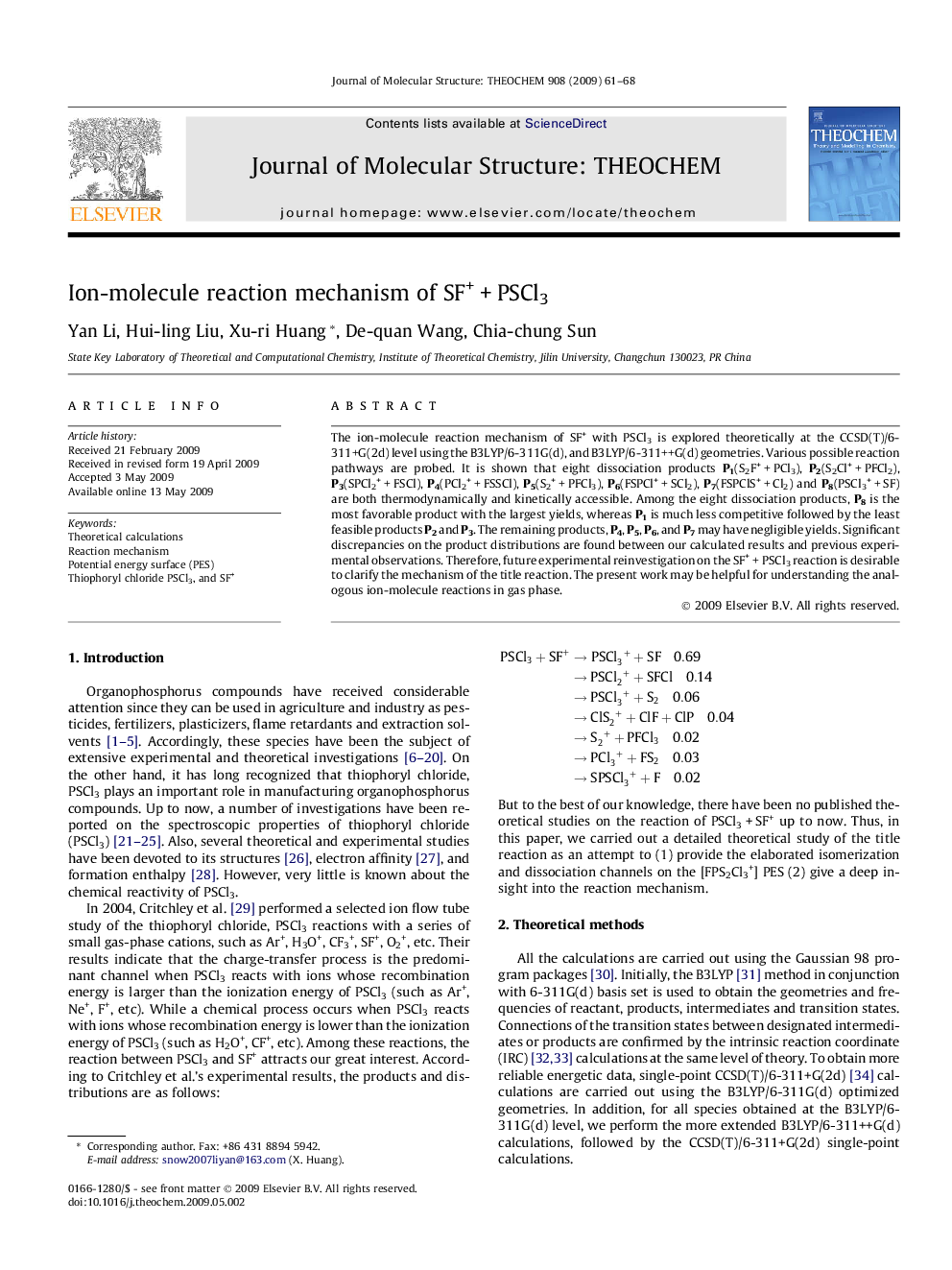| Article ID | Journal | Published Year | Pages | File Type |
|---|---|---|---|---|
| 5417178 | Journal of Molecular Structure: THEOCHEM | 2009 | 8 Pages |
Abstract
The ion-molecule reaction mechanism of SF+ with PSCl3 is explored theoretically at the CCSD(T)/6-311+G(2d) level using the B3LYP/6-311G(d), and B3LYP/6-311++G(d) geometries. Various possible reaction pathways are probed. It is shown that eight dissociation products P1(S2F+Â +Â PCl3), P2(S2Cl+Â +Â PFCl2), P3(SPCl2+Â +Â FSCl), P4(PCl2+Â +Â FSSCl), P5(S2+Â +Â PFCl3), P6(FSPCl+Â +Â SCl2), P7(FSPClS+Â +Â Cl2) and P8(PSCl3+Â +Â SF) are both thermodynamically and kinetically accessible. Among the eight dissociation products, P8 is the most favorable product with the largest yields, whereas P1 is much less competitive followed by the least feasible products P2 and P3. The remaining products, P4, P5, P6, and P7 may have negligible yields. Significant discrepancies on the product distributions are found between our calculated results and previous experimental observations. Therefore, future experimental reinvestigation on the SF+Â +Â PSCl3 reaction is desirable to clarify the mechanism of the title reaction. The present work may be helpful for understanding the analogous ion-molecule reactions in gas phase.
Related Topics
Physical Sciences and Engineering
Chemistry
Physical and Theoretical Chemistry
Authors
Yan Li, Hui-ling Liu, Xu-ri Huang, De-quan Wang, Chia-chung Sun,
